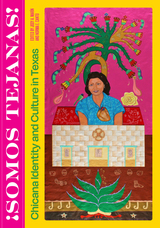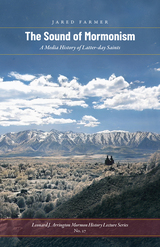2 books about Hardy, Andrew

Champa and the Archaeology of M? So'n (Vietnam)
Edited by Andrew Hardy, Mauro Cucarzi, and Patrizia Zolese
National University of Singapore Press, 2009
The kings of ancient Champa, a civilization located in the central region of today's Vietnam, started building sacred temples in a circular valley more than 1500 years ago. The monuments, now known by the Vietnamese name M? So'n, were discovered by nineteenth-century colonial soldiers and first studied by the French architect Henri Parmentier. Bombed during the Vietnam War, the ruins of the brick towers, decorated with exquisite carvings and sculptures, were designated as a UNESCO World Cultural Heritage site in 1999. An Italian team has worked at the site for the last ten years, doing archaeological research and restoration work in cooperation with Vietnamese specialists. This book is the first published volume based on their efforts. The opening section consists of historical, anthropological and architectural studies of the civilization of Champa. The remainder of the book presents an unusually intimate and extensively illustrated portrait of the archaeologists' research and restoration work at M? So'n. While this book is important for specialists and students of the history and archaeology of Champa and Southeast Asia, it also tells a fascinating story that will appeal to general readers and visitors to this exceptional archaeological site.
[more]

Discovering Vietnam’s Ancient Capital
The Archaeology and History of the Imperial Citadel of Thang Long-Hanoi
Edited by Andrew Hardy and Tien Ðông Nguyen
National University of Singapore Press, 2023
The first book in English on this important archaeological excavation in the heart of Vietnam's capital, now a World Heritage site.
As Vietnam entered the twenty-first century it began to prepare for the 1000th anniversary of the founding of its capital Thang Long, now Hanoi. In the heart of the city, a rescue excavation was launched on land earmarked for the construction of a new National Assembly building. Archaeologists unearthed thirteen centuries of vestiges of the ancient city of Thang Long, yielding a richer record than anyone had dared to hope for. Construction plans were shelved, excavations widened, and at the city's millennial celebrations in 2010, UNESCO announced its inscription of the Imperial Citadel of Thang Long on its World Heritage List.
This archaeological discovery has two histories. The first, told here by the archaeologists involved, is the story of the dig, which brought to light the bricks, tiles, pillars, sculptures, and ceramics of countless ancient temples and palaces. The second is the history of the citadel itself, in its early years as an outpost of the Chinese empire, in its heyday as the Forbidden City of Vietnam’s emperors, and in its downgrading and eventual destruction at the hands of the Nguyen dynasty and French colonial rulers. Bringing together history, urban history, and a fascinating story of the interplay of influences from China and Southeast Asia, this is also a fascinating case of an Asian capital city coming to understand its history and deciding how to preserve its archaeological remains.
As Vietnam entered the twenty-first century it began to prepare for the 1000th anniversary of the founding of its capital Thang Long, now Hanoi. In the heart of the city, a rescue excavation was launched on land earmarked for the construction of a new National Assembly building. Archaeologists unearthed thirteen centuries of vestiges of the ancient city of Thang Long, yielding a richer record than anyone had dared to hope for. Construction plans were shelved, excavations widened, and at the city's millennial celebrations in 2010, UNESCO announced its inscription of the Imperial Citadel of Thang Long on its World Heritage List.
This archaeological discovery has two histories. The first, told here by the archaeologists involved, is the story of the dig, which brought to light the bricks, tiles, pillars, sculptures, and ceramics of countless ancient temples and palaces. The second is the history of the citadel itself, in its early years as an outpost of the Chinese empire, in its heyday as the Forbidden City of Vietnam’s emperors, and in its downgrading and eventual destruction at the hands of the Nguyen dynasty and French colonial rulers. Bringing together history, urban history, and a fascinating story of the interplay of influences from China and Southeast Asia, this is also a fascinating case of an Asian capital city coming to understand its history and deciding how to preserve its archaeological remains.
[more]
READERS
Browse our collection.
PUBLISHERS
See BiblioVault's publisher services.
STUDENT SERVICES
Files for college accessibility offices.
UChicago Accessibility Resources
home | accessibility | search | about | contact us
BiblioVault ® 2001 - 2025
The University of Chicago Press









